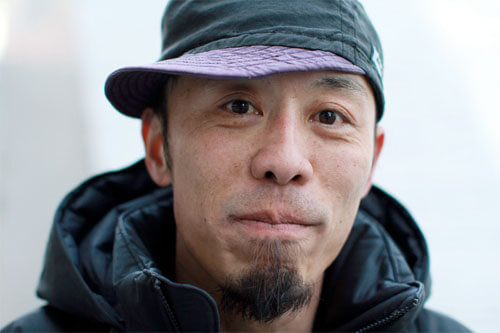Arimoto, who was born in Osaka in 1971, currently resides and works in Tokyo.
Arimoto, a 1994 graduate of Visual Arts Osaka, won the 35th Taiyo Award in 1998 for his piece "Portrait of Tibet."
He started the Totem Pole Photo Gallery in 2008.
In 2016, Arimoto collaborated with Zen Foto Gallery to publish "Tokyo Circulation," and in 2017, she was honored with the Photographic Society of Japan's Lifetime Achievement Award and the 26th Tadahiko Hayashi Award.
His other works include "TIBET" and "ariphoto selection" (Nos. 1–10, Totem Pole Photo Gallery) (Zen Foto Gallery, 2019). He actively exhibits his work both inside and outside of Japan. In 2017, he held a solo exhibition at Le Plac'Art Photo in Paris, and in 2019, he took part in the group show "Am Rand der Gesellschaft. Barlach, Springer, Arimoto" at Museum Bautzen in Germany.
Statement
In 1994, while still in my early 20’s and fresh out of photo school I went to India to photograph. Six months into my travels the backpack in which I was keeping my exposed film – over 150 rolls – was stolen. This incident cast a dark shadow over my youth and ultimately signified a turning point in my understanding about photography which continues to this day. Even though I went to India determined to make photographs this event was the trigger for me to realize that essentially I was there sightseeing and made me question why I was even in India in the first place. It made me aware of the ambiguity of my determination (…).
Soon after this I went to Nepal. With no set destination I happened to end up in Kathmandu. There, I encountered a Tibetan family on the roadside (…). My relationship with this family grew as we shared meals and our living space. In between mantra carving, I looked after the children when they played. Our time together was short yet it was a time of happiness. As the days passed I picked up bits of their language and began to feel a strong desire to see their homeland with my own eyes (..).
In 1996, I set foot in Tibet. I’ll never forget that thrill. Everything that had happened so far – every coincidence, incident, and tribulation, had brought me to this point. (…) Looking back I realize that most of my twenties were spent with Tibet. Having started out as an empty vessel, it was Tibet and my experiences there that made me full.
Selected Books on

